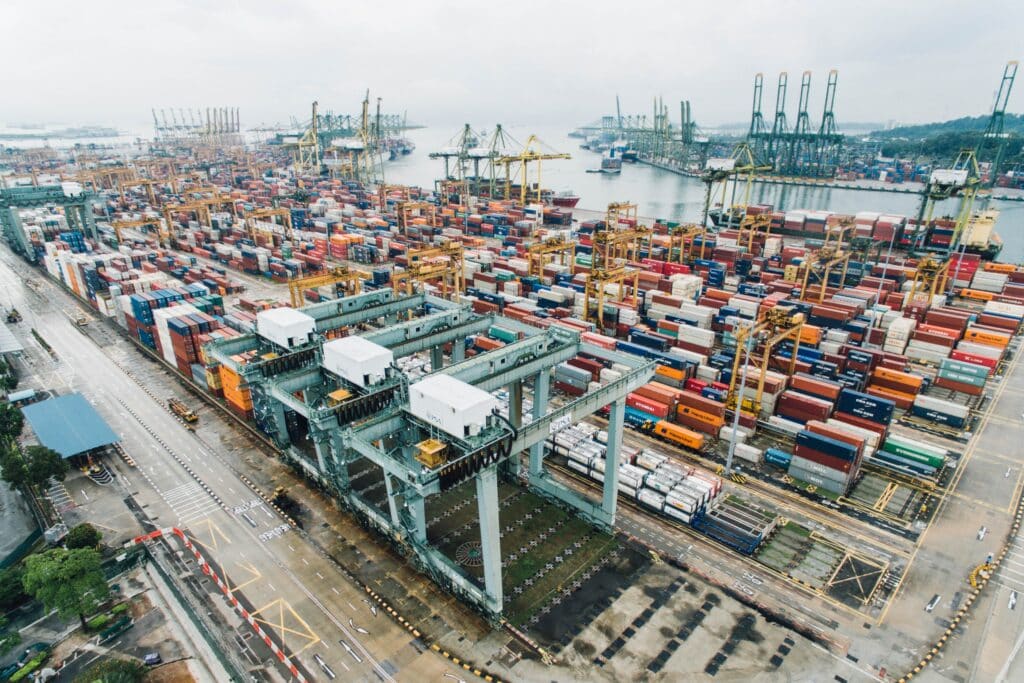Moscow, Russia (Ports Europe) January 23, 2023 – The International North-South Transport Corridor (INSTC) is critical to Moscow’s plans to redirect its cargo export and import from the north-west to the south-west of the country. But how realistic is the plan to use INSTC to bypass western sanctions?
“Currently, the capacity of the International North-South Transport Corridor (INSTC) is small, about 5 million tonnes of cargo per year. According to various calculations, a tenfold or more increase is expected by 2030,” said Vladimir Ivin, Deputy Head of the Federal Customs Service of Russia. “It is expected that these 50 and more million tonnes will be approximately equally distributed through the three branches of the INSTC”, he added.
The INSTC is a 7,200 km long multimodal route that connects St. Petersburg with the ports of Iran and India. It is an alternative to the sea route connecting Europe, the countries of the Persian Gulf and the Indian Ocean through the Suez Canal. The western and eastern branches of the INSTC pass through Iran.
The western branch provides for transportation across Iran by road through Rasht, the eastern branch by rail. The end point in Iran is the port of Bandar Abbas, from which cargo can be delivered to India by sea. The western branch passes through Azerbaijan, the eastern branch through Kazakhstan and Turkmenistan. In addition, direct sea transportation from Russia across the Caspian Sea to Iran is possible.
According to Russian officials, By 2030, the volume of Russian cargo along the North-South corridor is expected to reach 32 million tonnes. But this sounds like wishful thinking considering the outdated roads, railways, ports infrastructure not only in Russia but also in Central Asia and Iran.
North-South Corridor-INSTC developments
According to Ivin, all three directions of the INSTC develop differently.
“The eastern one has already started working, it is based on the railway that runs through Iran, Turkmenistan and Kazakhstan,” Ivin said. “Russian Railways reported that it is already ready to transport 5 million tonnes and transports as much cargo as it is supplied with no problems, so far on an irregular basis”.
“The western branch is more complicated – it is necessary to complete the construction of the railway in Iran to connect with the railway network of Azerbaijan. So far, small volumes of goods are transported here by road. The plan is also 15 million tons.
As for the offshore (Caspian Sea) route, this is the most preferable route, since it excludes additional transit countries and, therefore, reduces risks, but so far this direction is underdeveloped due to logistical and infrastructural restrictions”.
Ivin said that “there are plans to develop the Lotos special economic zone (it has two branches in the ports of Astrakhan and Olya), organize ferry transportation (mostly to and from Iran) to the ports of Astrakhan and Olya and a container line to the port of Makhachkala.
“In all these ports, our customs posts are working, ready for an increase in cargo traffic, but so far the volumes here are small,” Ivin said. “The government has planned additional measures to develop this area, implying an integrated approach that takes into account the shortage of the fleet, port infrastructure problems, the need for dredging, as well as the issue of balancing port dues and freight”.
The main problems of North-South Corridor, apart from underdeveloped transport infrastructure, are shortage of suitable ships and ferries in the Caspian, not enough railway cars, complicated documentation handling in both Central Asia and Iran (also under western sanctions), banking fees and payments between cargo providers and shippers.
Landlocked Central Asian states (former Soviet republics) Kyrgyzstan and Uzbekistan are also keen to use the INSTC. Belarus, also under sanctions, is also trying to use Russia’s Caspian ports for its export.
More Ports Europe articles about Moscow’s efforts to develop the INSTC
Copyright (C) Ports Europe. All Rights Reserved. 2023.

